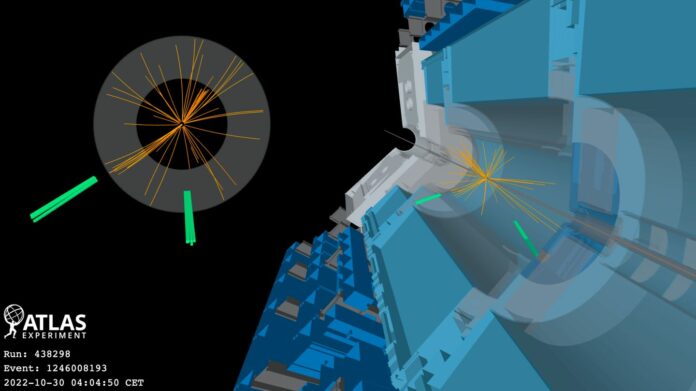Since its discovery, the Higgs boson has become an exciting topic for shedding light on the Universe’s fundamental structure. Since the Standard Model cannot predict the Higgs boson’s mass, it must be ascertained through experimental measurement. Its value controls how strongly the Higgs boson interacts with other elementary particles and with itself.
At the Lepton Photon Conference this week, the ATLAS collaboration reported how it had measured the Higgs boson mass more precisely than ever before. The Higgs boson’s mass is also a crucial parameter driving the evolution and the stability of the Universe’s vacuum.
Since the Higgs boson’s discovery, the ATLAS and CMS collaborations have measured its mass with increasing precision. The latest ATLAS measurement combines a new Higgs boson mass measurement to examine the particle’s decay into two highly energetic photons and an earlier mass measurement to investigate the particle’s disintegration into four leptons.
The latest measurement in the diphoton channel yielded a mass of 125.22 billion electronvolts (GeV) with a little 0.14 GeV of uncertainty. It combined studies of the ATLAS data sets from Runs 1 and 2 of the LHC. This diphoton-channel result is the most accurate measurement of the Higgs boson‘s mass from a single decay channel, with a precision of 0.11%.
The new result benefits from the full ATLAS Run 2 data set, which reduced the statistical uncertainty by a factor of two, and from significant improvements to the calibration of photon energy measurements, which decreased the systematic tension by almost four to 0.09 GeV. Compared to the previous ATLAS measurement in this channel.
Stefano Manzoni, convener of the ATLAS electron-photon calibration subgroup, said, “The advanced and rigorous calibration techniques used in this analysis were critical for pushing the precision to such an unprecedented level. Their development took several years and required a deep understanding of the ATLAS detector. They will also greatly benefit future analyses.”
The Higgs boson mass was determined to be 125.11 GeV with a 0.11 GeV uncertainty by the ATLAS researchers after combining this new mass measurement in the diphoton channel with the earlier mass measurement in the four-lepton channel. This is the fundamental parameter’s most accurate measurement, with a precision of 0.09%.
ATLAS spokesperson Andreas Hoecker said, “This exact measurement is the result of the relentless investment of the ATLAS collaboration in improving the understanding of our data. Powerful reconstruction algorithms paired with precise calibrations are the determining ingredients of precision measurements. The new measurement of the Higgs boson’s mass adds to the increasingly detailed mapping of this critical new sector of particle physics.”
